Abstract
In 276 children admitted to hospital with febrile convulsions a wide range of virus types was identified by means of nasopharyngeal secretions and cough/nasal swabs. The overall virus identification rate was 49%. Analysis of age, sex, family history, and past history showed no marked differences between the virus-positive and the virus-negative children. More than 80% had symptoms of respiratory infection in association with their convulsions, whether or not a virus was identified. Convulsions were not apparently more severe in the virus-positive group. Rapid virus diagnosis was found helpful in the management of children with febrile convulsions. The virus aetiology of many febrile convulsions has implications both for hospital cross-infection and for research into methods of prevention.
Full text
PDF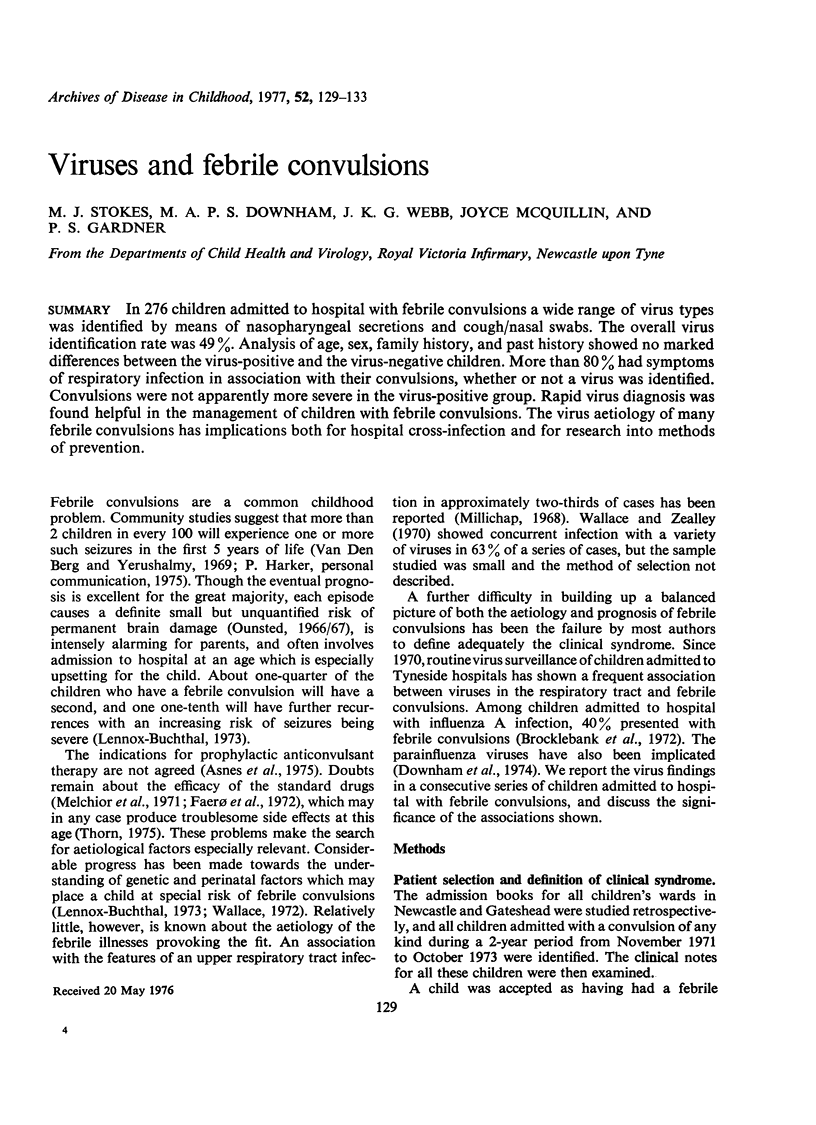
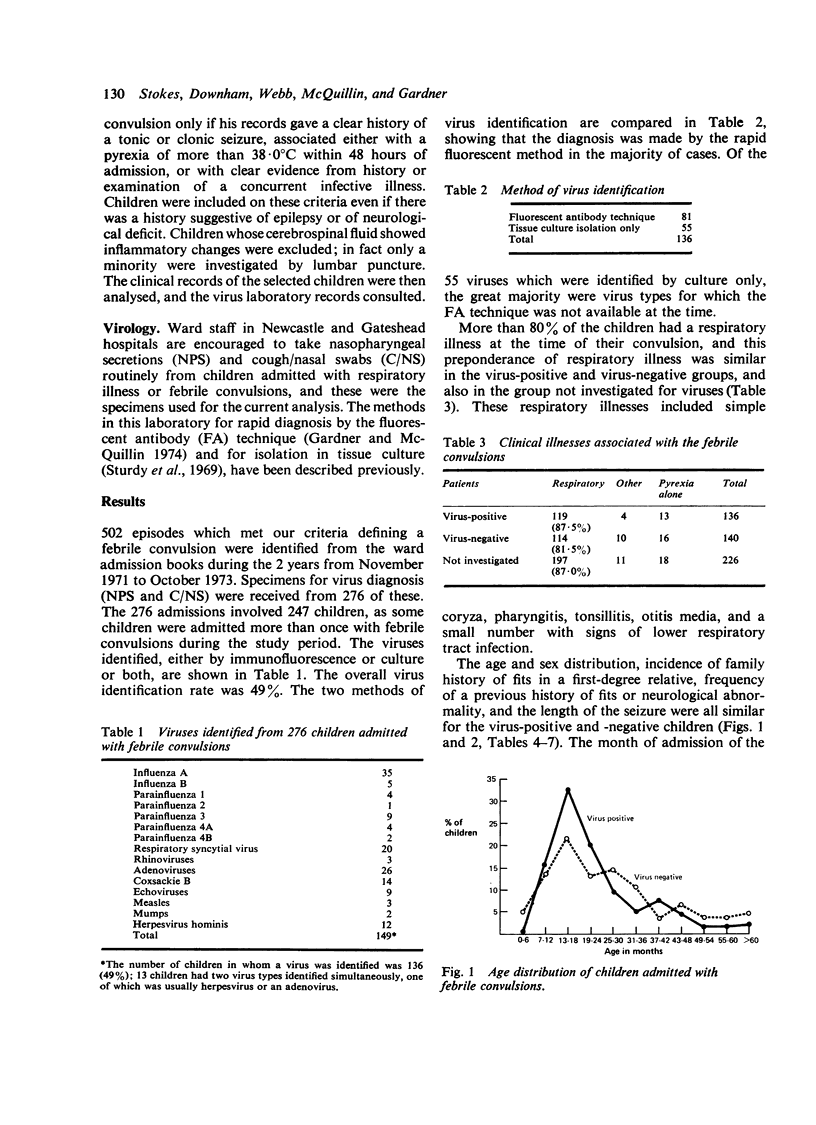
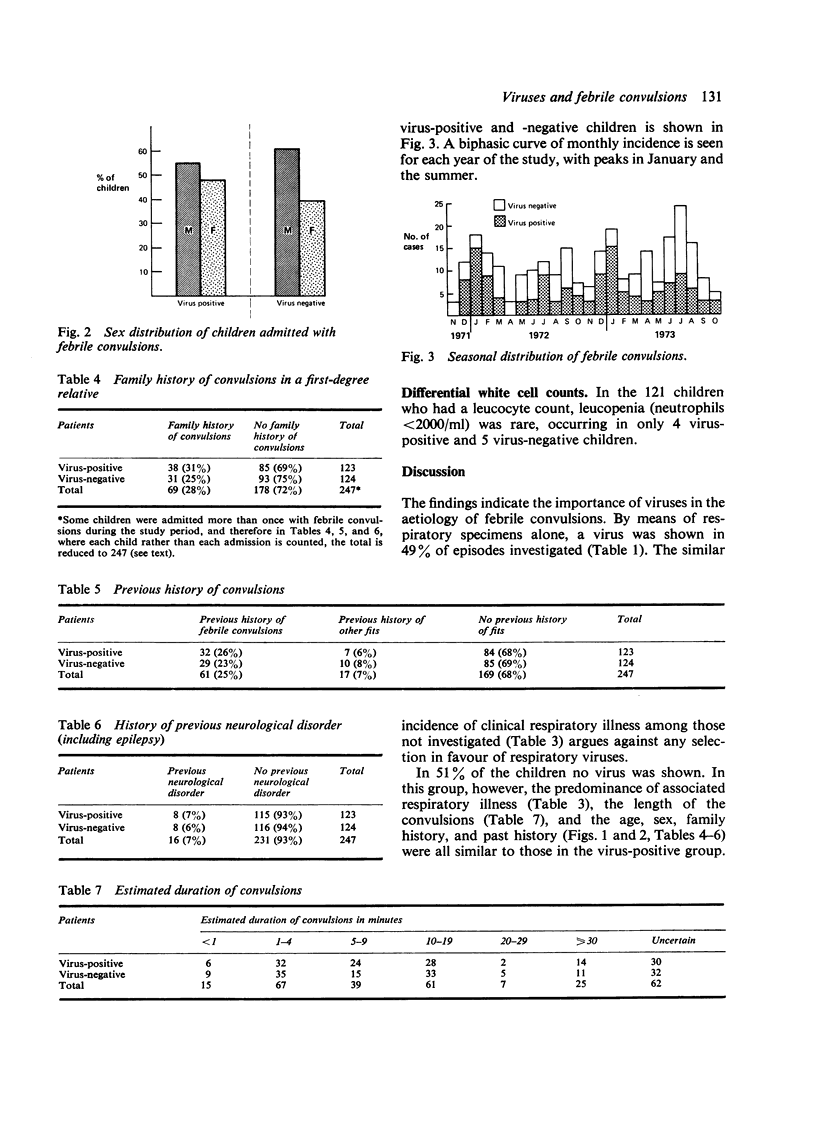
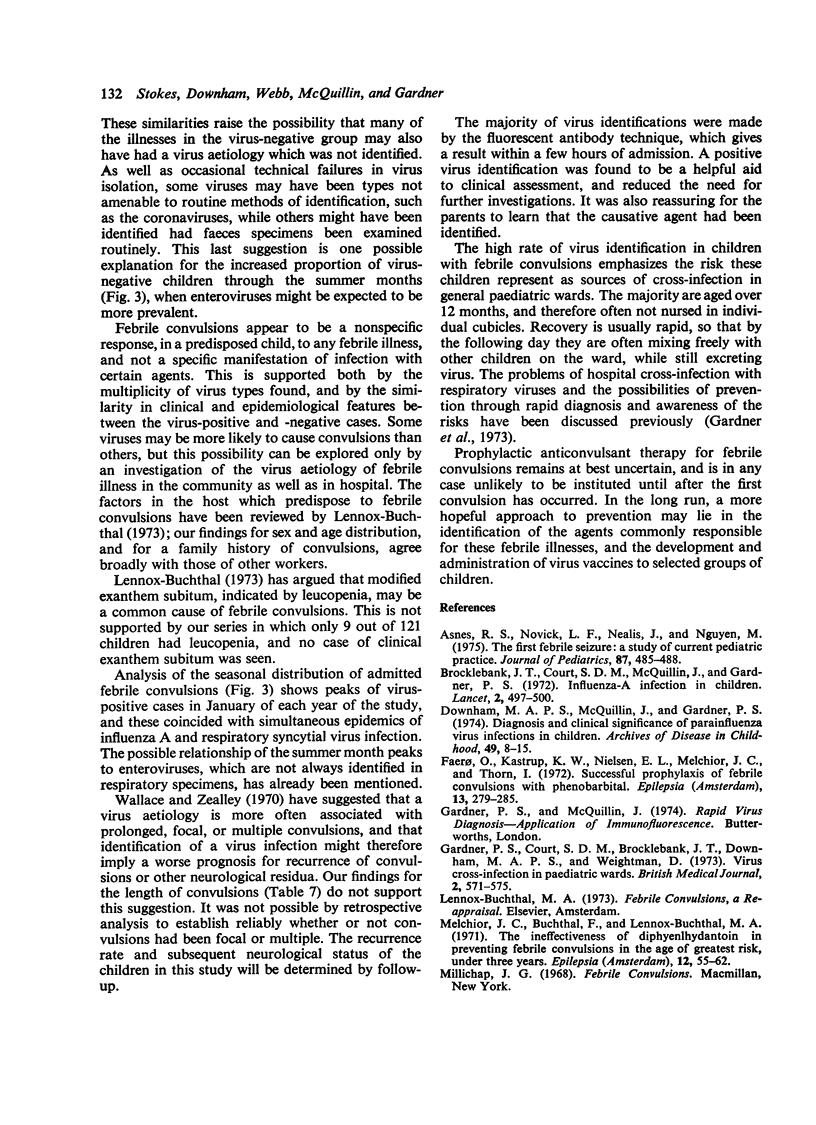
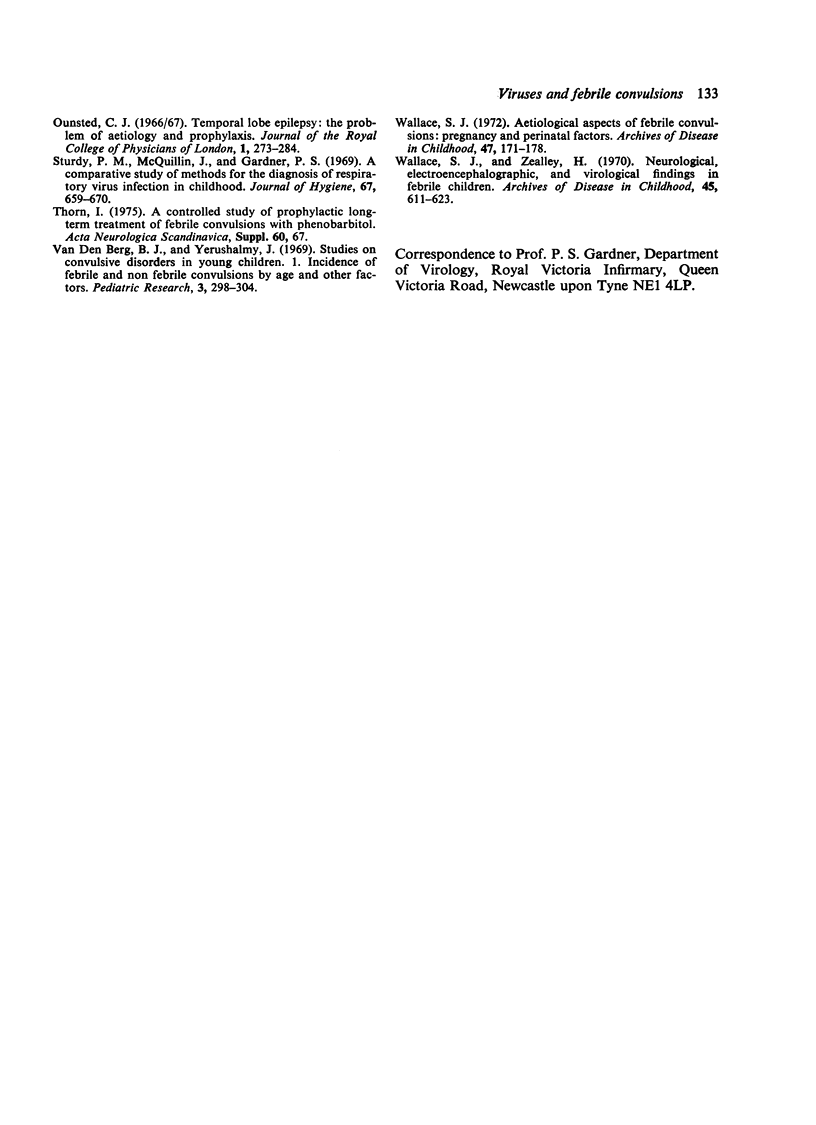
Selected References
These references are in PubMed. This may not be the complete list of references from this article.
- Brocklebank J. T., Court S. D., McQuillin J., Gardner P. S. Influenza-A infection in children. Lancet. 1972 Sep 9;2(7776):497–500. doi: 10.1016/s0140-6736(72)91902-2. [DOI] [PubMed] [Google Scholar]
- Downham M. A., McQuillin J., Gardner P. S. Diagnosis and clinical significance of parainfluenza virus infections in children. Arch Dis Child. 1974 Jan;49(1):8–15. doi: 10.1136/adc.49.1.8. [DOI] [PMC free article] [PubMed] [Google Scholar]
- Faero O., Kastrup K. W., Lykkegaard Nielsen E., Melchior J. C., Thorn I. Successful prophylaxis of febrile convulsions with phenobarbital. Epilepsia. 1972 Apr;13(2):279–285. doi: 10.1111/j.1528-1157.1972.tb05262.x. [DOI] [PubMed] [Google Scholar]
- Gardner P. S., Court S. D., Brocklebank J. T., Downham M. A., Weightman D. Virus cross-infection in paediatric wards. Br Med J. 1973 Jun 9;2(5866):571–575. doi: 10.1136/bmj.2.5866.571. [DOI] [PMC free article] [PubMed] [Google Scholar]
- Melchior J. C., Buchthal F., Lennox-Buchthal M. The ineffectiveness of diphenylhydantoin in preventing febrile convulsions in the age of greatest risk, under three years. Epilepsia. 1971 Mar;12(1):55–62. doi: 10.1111/j.1528-1157.1971.tb03915.x. [DOI] [PubMed] [Google Scholar]
- Sturdy P. M., McQuillin J., Gardner P. S. A comparative study of methods for the diagnosis of respiratory virus infections in childhood. J Hyg (Lond) 1969 Dec;67(4):659–670. doi: 10.1017/s002217240004211x. [DOI] [PMC free article] [PubMed] [Google Scholar]
- Van der Berg B. J., Yerushalmy J. Studies on convulsive disorders in young children. I. Incidence of febrile and nonfebrile convulsions by age and other factors. Pediatr Res. 1969 Jul;3(4):298–304. doi: 10.1203/00006450-196907000-00005. [DOI] [PubMed] [Google Scholar]
- Wallace S. J. Aetiological aspects of febrile convulsions. Pregnancy and perinatal factors. Arch Dis Child. 1972 Apr;47(252):171–178. doi: 10.1136/adc.47.252.171. [DOI] [PMC free article] [PubMed] [Google Scholar]
- Wallace S. J., Zealley H. Neurological, electroencephalographic, and virological findings in febrile cheldren. Arch Dis Child. 1970 Oct;45(243):611–623. doi: 10.1136/adc.45.243.611. [DOI] [PMC free article] [PubMed] [Google Scholar]


